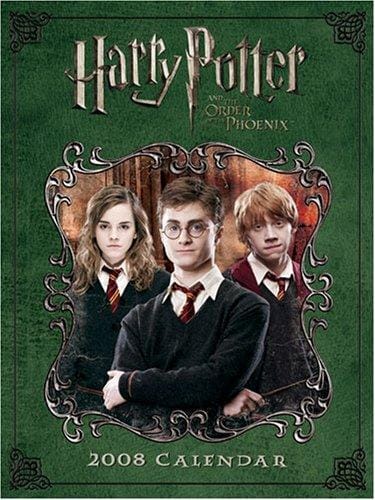Harry Potter and the Order of the Phoenix: A Deep Dive into the Fifth Installment
Explore the plot, themes, characters, and legacy of Harry Potter and the Order of the Phoenix in this concise, spoiler-light, SEO-friendly guide.

Introduction
Ever since J.K. Rowling released Harry Potter and the Order of the Phoenix in 2003, the fifth book in the beloved wizarding saga has sparked passionate discussion among readers and critics alike. Packed with political intrigue, emotional growth, and darker storytelling, it represents a pivotal turning point for Harry and his friends. This 800-word guide explores the plot, characters, themes, and enduring legacy of Harry Potter and the Order of the Phoenix while providing SEO-friendly insights for fans and newcomers.
Plot Overview
The novel opens during a stifling summer at Privet Drive, where Harry feels isolated after witnessing the return of Lord Voldemort. When Dementors attack him and his cousin Dudley, Harry is forced to use magic, leading to a disciplinary hearing at the Ministry of Magic. Rescued by members of the secretive Order of the Phoenix, Harry learns that the Ministry is actively denying Voldemort’s comeback, smearing Dumbledore, and controlling the wizarding press. The stage is set for a tense battle between truth and propaganda.
Returning to Hogwarts
Back at Hogwarts School of Witchcraft and Wizardry, Harry hopes to find solace, but conflict greets him at every corner. The Ministry has installed Dolores Umbridge as the new Defense Against the Dark Arts professor, tasking her with monitoring — and effectively sabotaging — Dumbledore. Umbridge’s refusal to teach practical defense spells leaves students vulnerable, and her cruel "Educational Decrees" choke the school’s spirit. Harry’s credibility is constantly questioned by peers who read Daily Prophet headlines labeling him a liar.
Dumbledore’s Army and Student Rebellion
In response to Umbridge’s oppressive rule, Hermione Granger proposes secretly teaching real defensive magic. The students form Dumbledore’s Army (D.A.), meeting in the hidden Room of Requirement. Under Harry’s guidance they master spells such as the Patronus Charm, which becomes both a literal and figurative light in the darkness. These clandestine lessons foster camaraderie and empower once-timid pupils like Neville Longbottom and Luna Lovegood, underscoring the story’s theme of collective resistance against authoritarian control.
Dolores Umbridge: A New Kind of Villain
Unlike Voldemort’s outright evil, Umbridge embodies institutional malevolence that hides behind pink cardigans and saccharine smiles. Her cat-covered office and deceptively sweet demeanor contrast with her sadistic punishments, notably forcing Harry to carve "I must not tell lies" into his own hand. Umbridge’s presence shows that tyranny can thrive in mundane forms, making her one of the series’ most chilling antagonists.
The Prophecy and Central Themes
At the heart of Harry Potter and the Order of the Phoenix lies a mysterious prophecy housed in the Department of Mysteries. It foretells a confrontation between Harry and Voldemort, stating that "neither can live while the other survives." The quest to obtain this prophecy drives the climactic battle and reveals crucial themes: destiny versus choice, the corrupting nature of fear, and the power of love and friendship. The novel also delves into grief, as Harry mourns the death of his godfather Sirius Black, offering a mature exploration of loss.
Character Development
Rowling pushes her characters into complicated emotional territory. Harry grapples with anger and alienation, giving readers a raw portrayal of teenage anxiety. Hermione evolves from rule-follower to strategic rebel, while Ron Weasley contends with insecurity yet proves loyal on the Quidditch pitch. Secondary characters shine too: Neville’s growth foreshadows his heroism, and Luna’s quirky wisdom offers comfort. Even Snape gains depth through Occlumency lessons, hinting at his conflicted loyalties.
Book vs. Film Adaptation
In 2007, Warner Bros. released the cinematic adaptation of Harry Potter and the Order of the Phoenix, directed by David Yates. While the film captures key set pieces — the D.A. meetings, the explosive Ministry battle, and Umbridge’s forest comeuppance — it condenses subplots like Quidditch and St. Mungo’s hospital. The screenplay streamlines the narrative, emphasizing visual spectacle over introspection. For devoted readers, the book offers richer internal monologues and political nuance; for casual viewers, the film delivers a fast-paced introduction to the story’s stakes.
Legacy and Cultural Impact
The fifth installment profoundly influenced the Harry Potter franchise. It expanded the wizarding world’s political landscape with the Ministry’s propaganda machine and vigilante groups like the Order itself. Many fans cite Order of the Phoenix as the moment the series transitioned from children’s fantasy to complex young-adult fiction. Its themes resonate with modern audiences confronting misinformation, governmental overreach, and the importance of youth activism.
Conclusion
Harry Potter and the Order of the Phoenix is more than a mid-series entry; it is the emotional and thematic axis around which the remaining books revolve. By combining gripping plotlines, multifaceted villains, and profound lessons on resistance and resilience, J.K. Rowling crafted a novel that continues to captivate new generations. Whether you’re revisiting the series or discovering it for the first time, the fifth book offers an unforgettable journey through the darker corridors of Hogwarts — and the brighter sparks of hope that persist even in shadow.



